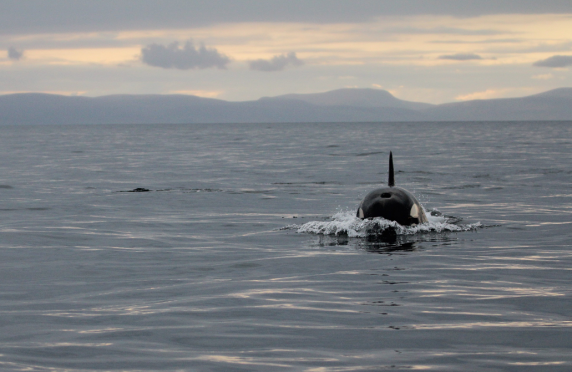A group of killer whales could have departed their traditional hunting grounds in the waters of Orkney and Shetland to prey on seals in the Moray Firth.
Data from the Cetacean Research and Rescue Unit, a north-east organisation, dedicated to the study and preservation of marine mammals, such as dolphins, porpoises and whales, has highlighted that sightings of orcas have spiralled in the waters between Moray and the north since 2001.
The group spotted only around four of the creatures along the northern and southern coasts of the firth 15 years ago, but by 2015, that number had shot up to 34 definite sightings.
In a research paper, published in the scientific journal Aquatic Mammals, the CRRU indicated there had been a total of 143 confirmed sightings during the 14-year period, with a total of 18 individual whales identified.
The work highlighted a number of potential factors behind the surge in activity, including the rise of online social networks and the number of people actively looking for the animals.
The authors of the report added that one of the possible reasons for the increase in killer whale sightings in the Moray Firth could be due to a drop in the population of common seals in Orkney and Shetland.
They stated: “The observed increase in Orca (killer whale) sightings in the Moray Firth from 2001 to 2015 also coincides with the exaggerated decline in P. vitulina (common seal) populations in Shetland and Orkney during this period, as whales are perhaps compelled to move further south in search of this pinniped quarry.”
In addition to seals, the researchers also observed the predators feeding on smaller cetaceans, and even seabirds like ducks.
The CRRU, which has been saving marine life in the region for more than 20 years, will use its insights into the Scottish orcas to increase efforts to preserve the species.
As a recognised charity, the CRRU depends on significant support from the public to carry out its research and life-saving rescue missions.
To find out more, visit www.crru.org.uk
